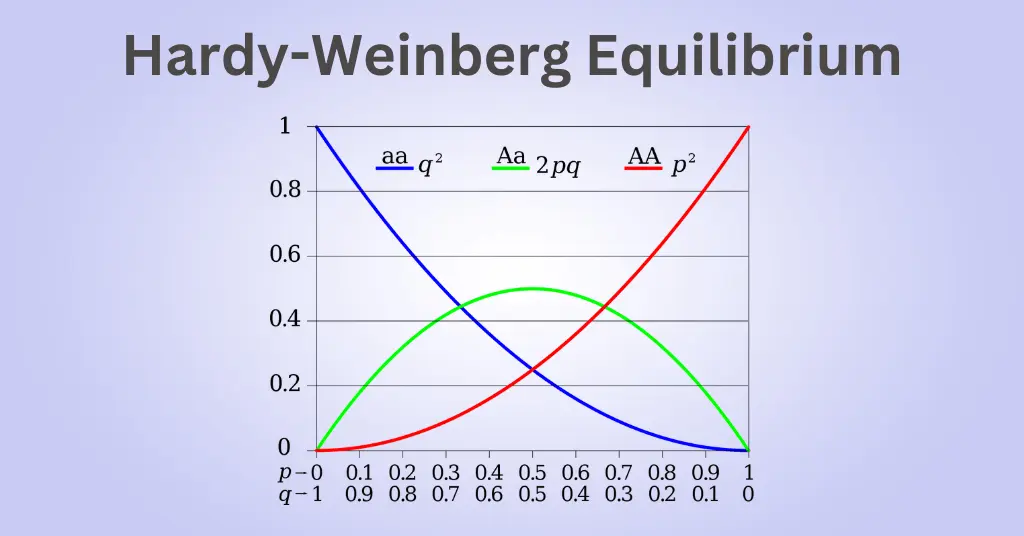Are Humans In Hardy-Weinberg Equilibrium?

Introduction
The Hardy-Weinberg equilibrium is a fundamental principle in population genetics that describes how allele frequencies remain stable over generations in a population that is not influenced by evolutionary forces. This concept is crucial for understanding genetic variation and evolution. But are humans, as a species, in Hardy-Weinberg equilibrium? This question not only invites a discussion about human genetic diversity but also explores the factors that disrupt equilibrium, such as mutation, migration, genetic drift, and natural selection. In this article, we will delve into the conditions required for Hardy-Weinberg equilibrium, analyze human populations through this lens, and examine the implications of our findings.
Understanding Hardy-Weinberg Equilibrium
What is Hardy-Weinberg Equilibrium?
The Hardy-Weinberg principle states that allele and genotype frequencies in a population will remain constant from generation to generation in the absence of evolutionary influences. This equilibrium is based on five key assumptions:
- Large Population Size: To minimize the effects of genetic drift.
- No Mutations: No new alleles are introduced into the gene pool.
- No Migration: No individuals enter or leave the population.
- Random Mating: All individuals have an equal chance of mating.
- No Natural Selection: All genotypes have equal reproductive success.
The Hardy-Weinberg Equation
The mathematical representation of the Hardy-Weinberg principle is given by the equation:
[ p^2 + 2pq + q^2 = 1 ]
Where:
- ( p ) = frequency of the dominant allele
- ( q ) = frequency of the recessive allele
- ( p^2 ) = frequency of homozygous dominant genotype
- ( 2pq ) = frequency of heterozygous genotype
- ( q^2 ) = frequency of homozygous recessive genotype
Are Humans in Hardy-Weinberg Equilibrium?
Genetic Variation in Human Populations
Humans exhibit significant genetic diversity due to various factors, including geographic distribution, cultural practices, and historical migration patterns. Studies have shown that human populations are not in Hardy-Weinberg equilibrium for several reasons:
- Non-Random Mating: Cultural and social factors influence mate selection, leading to assortative mating where individuals with similar phenotypes are more likely to mate.
- Mutation: New mutations occur regularly, introducing new alleles into the gene pool.
- Migration: Human populations are highly mobile, leading to gene flow between populations. This migration disrupts allele frequencies.
- Natural Selection: Environmental pressures, such as disease resistance and climate adaptation, favor certain genotypes over others, altering allele frequencies.
Case Studies and Real-World Examples
Sickle Cell Anemia
A classic example of natural selection affecting human populations is the prevalence of the sickle cell allele in regions where malaria is endemic. The heterozygous genotype (carrying one normal and one sickle cell allele) provides a survival advantage against malaria, leading to a higher frequency of the sickle cell allele in these populations. This dynamic illustrates how natural selection can disrupt Hardy-Weinberg equilibrium.
Cystic Fibrosis and Genetic Drift
In some populations, such as those of European descent, the cystic fibrosis allele is more common than expected under Hardy-Weinberg conditions. This can be attributed to genetic drift in small populations, where random fluctuations in allele frequencies can lead to a higher prevalence of certain genetic disorders.
Implications of Non-Equilibrium
The fact that humans are not in Hardy-Weinberg equilibrium has significant implications for public health, conservation genetics, and understanding human evolution. It emphasizes the importance of considering evolutionary forces when studying genetic diseases, population dynamics, and the effects of environmental changes on genetic diversity.
Conclusion
In conclusion, humans are not in Hardy-Weinberg equilibrium due to several influencing factors, including non-random mating, mutations, migration, and natural selection. Understanding these dynamics is crucial for researchers and public health officials as they navigate the complexities of human genetics and evolution. As we continue to study our genetic diversity, we gain valuable insights into our past and the future of human populations. The exploration of Hardy-Weinberg equilibrium not only enriches our understanding of genetics but also highlights the intricate interplay between evolution and human society.
As we move forward, it is essential to consider how ongoing changes in our environment and social structures will impact our genetic makeup and health.



Comments ()